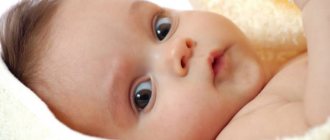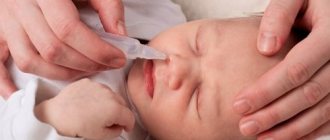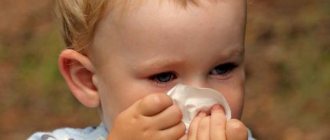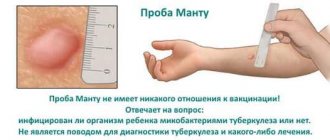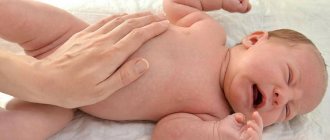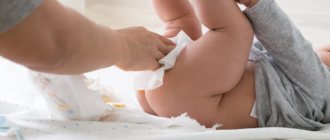A child behaves capriciously for a number of reasons. Quite often, adults cannot immediately determine the nature of his indignation. For example, in infancy it is impossible to independently get rid of snot that has accumulated in the nose. In this case, parents should come to the rescue. They should know how to suck the snot out of a baby.
The symptom often appears in an infant with various diseases of the upper respiratory tract. Inconvenience and discomfort affect the overall well-being of the child. A baby in this condition feels bad for a number of reasons:
- Unable to breastfeed well. If your nose is clogged, it becomes difficult to eat and breathe at the same time. That is why in this situation many children experience a deterioration in appetite. Some of them even refuse food.
- An infant with a stuffy nose needs to breathe through his mouth. However, immediately after birth, babies do not have such skills. A runny nose can cause the baby to choke.
- The child's body has a number of characteristics, so rhinitis develops against the background of the negative influence of external and internal factors. If the inflammation is not eliminated in time, it can spread to the throat or ears. Acute otitis media in infancy is dangerous and can lead to the development of deafness. Parents should not ignore the symptom and do everything to eliminate it.
It is necessary to suck out a baby's snot, because only through this procedure can you get rid of a large amount of accumulated mucus. Before starting the procedure, you need to know exactly how to perform it and consult with your doctor.
Methods for removing mucus
Today, there are many ways to help a newborn get rid of snot. Manufacturers offer additional devices that will make the procedure better and faster. As a result, the baby is guaranteed to have a clean nose and be able to breathe deeply.
Removing snot using a syringe
When suctioning using this device, you must perform all actions according to this diagram:
- You can only use a syringe without a needle. Additionally, air must be removed from it.
- The procedure should begin at a time when the child is completely calm.
- Before inserting the end into the nostril, it must be smeared with Vaseline. Otherwise, the risk of damage to the mucous membrane increases.
- The piston must be pulled smoothly, without sudden movements.
- The procedure is performed for each nostril separately.
- After completing the manipulations, the nose should be wiped with a clean cotton swab.
To suck out snot, you need to thoroughly wash the syringe again using warm water or saline solution.
Using a syringe to remove snot
A rubber bulb with a plastic spout will help quickly and effectively remove mucus from your baby's nasal cavity. It is often used due to its reasonable cost and ability to control pressure. To complete the procedure, you must complete the following steps:
- The pear can only be used after heating. In this case, the most comfortable conditions will be created for the children.
- Apply a small amount of Vaseline to the end.
- The baby should be as calm as possible.
- It is best to remove snot 30 minutes after eating.
- You must try to remove as much air as possible from the syringe. After this, the tip is inserted into one of the nostrils.
- Suction should be done smoothly. Otherwise, the risk of discomfort increases.
- The manipulations are repeated exactly for the second nostril.
- After completing the procedure, the nose must be wiped with a cotton swab and saline solution.
The pear should be thoroughly washed in boiled water with a disinfectant.
Mechanical devices
It is most convenient to use an aspirator to remove snot from the nose. This device consists of two tubes with a small reservoir between them.
With its help, snot is sucked out according to this scheme:
- The device must be washed before each procedure.
- The tubes are connected according to the diagram and connected to the tank.
- Mommy must do everything to ensure that the baby becomes as calm as possible.
- Apply a small amount of Vaseline or peach oil to the tip of the tube.
- The device must not be inserted deeply. Do not damage the mucous membrane.
- The parent takes the second end of the tube into his mouth and smoothly draws in air. It is not allowed to do this abruptly.
- It is necessary to carry out the procedure separately for each nostril.
- After you finish removing the snot, you should wipe your nose well.
The suction must be cleaned of mucus after each procedure. Thanks to this, it will be possible to prevent further development of the infection.
Electrical devices
When sucking, it is most convenient to use a fully automatic device. However, you must first adjust the power correctly. As a rule, such models contain melodies in their memory that help the child calm down. Thanks to the aspirator, it is possible to eliminate snot with mucus even if it is too thick.
You can suck out snot correctly if you adhere to the following scheme:
- Apply a small amount of oil or Vaseline to the tip.
- Gently insert one end into the nasal cavity.
- Click on the special button.
- Remove the tube from the passage and repeat the manipulation with the second nostril.
- Remove any remaining snot or mucus using a cotton pad.
- After completing the procedure, the reservoir should be thoroughly rinsed and accumulated mucus removed. You must use soap during the process.
If mommy notices snot with blood, then it is not recommended to continue the procedure. In this case, you should not hesitate to contact your pediatrician for advice.
Using special cotton wool flagella
After the suction procedure is completed, crusts may remain in the nasal cavity and dry to the nasal mucosa. It is not advisable to use an aspirator to remove them. In this case, turundas can save the situation.
These devices must be used according to the following scheme:
- It is most convenient to make flagella from cotton pads. They should match the shape of the baby's nostrils.
- Before starting the procedure, they must be soaked in peach or sea buckthorn oil. Some women prefer to do this in saline or even breast milk.
- Flagella can only be inserted into the nostril carefully. The mucus will become soaked in a few minutes; only after this is it possible to remove the crusts.
- Cotton swabs can be used once.
- After completing the procedure, the nose is thoroughly wiped with a cotton swab, which was previously soaked in saline solution.
How many times can flagella be used? Parents should know that this procedure can only be carried out with disposable instruments.
Clearing secretions from baby's nose
Infants suffer from a runny nose much more severely than adults, since they cannot blow out mucus and clear the nasal passage on their own. Therefore they need help.
There are special devices for removing nasal secretions. The most popular is the nasal aspirator. There are mechanical, vacuum and electronic aspirators. The choice is up to the parents.
To clean a child’s nose, you can use cotton wool, a sterile gauze cloth, a syringe (a small rubber bulb), as well as physiological solutions and vegetable oil (olive, sunflower or peach). It should be noted that cotton swabs are not recommended for cleaning a baby’s nose. Some doctors allow their use only after three months of age. In general, cotton swabs should be used with great caution, as they can injure the child’s mucous membranes.
Clearing mucus from the nose with cotton swabs
For this procedure, it is better to use sterile cotton wool, but you can get by with regular cotton wool. Cotton flagella should be quite elastic and thin, about five millimeters. The length of each flagellum should be about four centimeters. To make mucus easier to remove, you should use a saline solution or saline solution. Before starting the nasal cleansing procedure, you need to drop two or three drops of the solution into each nostril.
Sequencing:
- After the mucus has softened and become more liquid under the influence of saline solution, you can proceed directly to cleaning the nose. To do this, you need to moisten a cotton swab in vegetable oil, insert it into your nose and twist it clockwise, gradually pulling it out.
- If the baby has a lot of snot, then it is necessary to rinse the nose with isotonic saline solutions throughout the day, which are available in all pharmacies. They disinfect and dry the mucous membrane.
- If the baby has redness around the nostrils, then it is necessary to lubricate the irritated skin with Bepanten ointment at night. It helps fight various skin problems in young children.
Preventive actions
Parents should focus all their efforts on preventing the development of snot in their baby. To do this, it is enough to dress him warmly and adhere to the basic rules of personal hygiene. Humidifiers help improve the condition of the mucous membrane. If you follow these simple rules, you won’t have to get rid of snot using suction in the future.
A child cannot explain to adults what the problem is when he is sick - he just cries. When a child has a cold, he or she cannot blow his nose on his own. Therefore, treatment of a runny nose in a baby includes suctioning out the snot.
The disease causes a lot of inconvenience for an adult, but it is especially unpleasant for a newborn for several reasons:
- Sucking becomes difficult for the baby: he cannot eat and breathe at the same time, and therefore interrupts his food intake to inhale.
- A newborn does not yet know how to breathe through his mouth with the same ease as an adult, so he suffocates when he has a runny nose.
- Due to the structural features of the body, the child does not suffer from isolated rhinitis. Inflammation often spreads to the throat; in the worst case, a runny nose develops into acute otitis media, which can lead to hearing loss for the baby.
It is important to help your child get rid of mucus accumulated in his nose. The main thing is to first learn how to suck out snot correctly so as not to harm the baby’s health.
Causes of mucus in the nose
A runny nose causes a lot of inconvenience to an infant; it makes it difficult for him to breathe, and an adult needs to know how to suck out the snot from a newborn in order to help him.
In addition to physiological reasons, when the mucous membrane in a baby’s nose is just forming, there are also those that are not related to physiology, and you need to know about them:
- The newborn choked on mother's milk or formula;
- Overheating of the body;
- Colds caused by hypothermia;
- Viral infection - ARVI;
- The presence of a foreign body in the nasopharynx;
- Teething.
Depending on the type and stage of development of the runny nose, different approaches are used to free the baby’s nose from mucus.
Cold. Most often, an accumulation of mucus in the nose indicates that the child has a cold. Snot is formed as a result of tiny viruses or bacteria entering the body and evolves from the consistency of water to a thick, difficult-to-separate content.
Problems with the gastrointestinal tract. Also, snot, oddly enough, can form as a result of disorders associated with the gastrointestinal tract.
Allergy. A runny nose also appears during allergic reactions, but older children are usually susceptible to this, although there are exceptions.
Belching. There is a type of runny nose that appears only in infants. It is a mucous, curd-like discharge from the nasal cavity. Such sniffles usually appear at two to three months; they do not pose any danger. This phenomenon is usually caused by gastric contents entering the nose, this occurs as a result of the baby regurgitating. The discharge can be carefully removed with a cotton swab.
Teething. Also, a runny nose periodically occurs when the first teeth begin to emerge. This should not be a cause for concern if the child’s general health is satisfactory and there is no increase in body temperature.
Increased salivation. At about two months, children may develop the so-called “false runny nose.” This is due to excessive salivation, during which the newborn can blow bubbles not only with his mouth, but also with his nose. During this period, the child may cough, choking a little on saliva. But there is no need to worry if there are no other symptoms: fever, feeling unwell, etc.
What causes snot with blood in a child: all possible causes and ways to help
How to remove mucus
There are many methods for clearing mucus from a small child’s nose. Various devices do this.
How to suck out mucus from a baby's nose with a disposable syringe:
- Remove the needle and release the air.
- Calm the child.
- Lubricate the tip of the syringe with Vaseline and carefully insert it into the baby’s nostril. Do not insert too deeply - the hard edge will damage the nasal mucosa.
- Carefully pull the piston towards you. Do this smoothly so that harshness does not harm the baby.
- Repeat from the second nostril.
- Wipe your nose with a cotton pad soaked in saline solution.
The syringe can be reused, but it is important to wash it thoroughly in warm water and soap.
Syringe
A syringe is a rubber bulb with a thin plastic spout. To suck the baby's snot, you need the smallest one.
- Rinse the syringe before use until it is warm.
- Lubricate the tip with Vaseline.
- Calm the child.
- The procedure is carried out half an hour after feeding.
- Squeeze the bulb in your hand so that the air comes out of it, and insert the tip into the baby’s nose.
- Unclench your hand smoothly so that the baby does not experience discomfort from sudden suction.
- Repeat from the second nostril.
- Wipe the baby's nose with a cotton pad soaked in saline solution.
After the procedure of suctioning snot with a pear, you need to wash it in warm water and soap, outside and inside.
Mechanical aspirator
The device is sold in a pharmacy. It is made simply - from two tubes connected by one reservoir.
- Rinse the device before use.
- Assemble by connecting the tubes to the reservoir.
- Calm the child so that he does not twitch or cry.
- Lubricate the tip of the tube with Vaseline or peach oil.
- Insert shallowly and carefully into the newborn's nostril.
- Take the tip of the second tube with your mouth and gently inhale the air - a sharp inhalation is dangerous for the child’s delicate mucous membranes.
- Repeat the procedure with the second nostril.
- Wipe your baby's nose.
Equipment for suctioning snot, the aspirator is cleared of mucus and washed in warm water after each use.
Electronic aspirator
The operating principle of an electronic aspirator is similar to a mechanical one. But the force of retraction is determined not by how an adult inhales, but by the power set on the device. The aspirator is equipped with bright pictures or music that accompanies the suction of snot and distracts the newborn from what is happening with the nose.
- Lubricate the tip of the tube with oil or Vaseline.
- Insert into the newborn's nose.
- Press the button.
- Pull out the tube and repeat with the second nostril.
- Wipe the baby's nose.
- After use, empty the mucus reservoir and wash the tubes with soap.
Cotton flagella
If, after sucking out the snot in the newborn’s nose, there are dried crusts or mucus left that the aspirator is unable to remove, it is better to use turundas.
- Make flagella from cotton pads that do not fray, the size of a newborn’s nostrils.
- Soak in oil (peach, sea buckthorn), saline solution or in breast milk diluted with it.
- Insert the flagella into the child's nostrils and gently twist. If the mucus has dried, leave for two minutes so that the milk softens the crusts.
- Remove the flagella and discard.
- Wipe the baby's nose with a cotton pad soaked in saline solution.
Flagella cannot be used twice.
Sucking snot from a baby’s nose with your mouth is a traditional medicine method that was used when there were no special devices. In modern times there is no need to resort to it, especially since it is dangerous for a newborn:
- Inhaling too hard damages the sensitive mucous membrane and can lead to nosebleeds.
- If pathogenic microflora from an adult’s mouth gets onto the baby’s mucous membranes, the disease worsens.
- This method should not be used unless the situation is critical.
How does a runny nose occur in newborns and infants?
Even if a lot of mucus has accumulated in the baby’s nasopharynx, this does not mean that he has a runny nose. It is often a symptom of a cold, which may be of bacterial or viral origin. Also, snot in infants and older children can be a manifestation of allergic reactions.
. Vasomotor runny nose is observed against the background of vascular pathologies, but it practically does not occur in newborns. If rhinitis is suspected in an infant, it should be shown to a pediatrician or an otolaryngologist.
There is a specific type of runny nose, which is typical only for infants and appears at the age of 2-3 months. It is characterized by curdled snot from the baby's nose. This discharge from the nasopharynx is not dangerous and is caused by the fact that stomach contents partially enter the nasal passages when regurgitating.
.
There is another type of snot that is associated with teething in infants. There is no need to worry if the baby’s general condition does not deteriorate and the temperature does not rise.
The function of the salivary glands in infants is activated at approximately 2 months. This can cause what is called a false runny nose.
. The baby is actively drooling and bubbles appear, including from the nose. Due to active salivation, a cough may appear due to choking. In this case, there is no reason to worry if the child’s condition does not change in any way.
Prevention of a runny nose
Instead of sucking out the child's snot, try to prevent the onset of the disease by creating suitable conditions for the sensitive child's body. Dress your baby according to the weather, take care of the baby’s hygiene. The humidity requirements in the child’s room are not lower than 60%, and the temperature is not higher than 22 degrees. The room should be ventilated often, and the baby should be taken for walks more often. If you maintain the recommended humidity and temperature, you may not need to suction your newborn's snot.
Good nasal breathing is very necessary for a child of the first year of life. Physiologically, a small nose is built in such a way that even a slight swelling of the adenoids or mucous membrane leads to the fact that it becomes difficult for the baby to breathe. Because of this, he constantly wakes up at night because mucus flows into his throat and irritates his diaphragm. A child who cannot breathe through his nose also has problems feeding. After all, he cannot suck the breast and breathe through his mouth at the same time. Therefore, during feeding, the baby is constantly interrupted, greedily inhales air, and gets angry that he cannot eat normally. All this leads to whims, crying and restlessness of the baby. And how parents worry when they see the child’s condition and cannot help him in any way. Well, they can’t blow their nose for the child, can they? In general, a baby will learn to get rid of mucus in the nose on his own only by the age of two, or even later. Until this time, parents must learn how to suck out the snot from their baby on their own.
Several decades ago, when there were no modern nasal aspirators on sale, young mothers had no choice but to suck out snot directly with their mouths. At the same time, there was a high probability of infection from the baby. And there wasn’t much that was pleasant about this method, you’ll agree. Modern products delight us with effective and safe devices with which we can free our children’s noses quickly and efficiently. So, let's look at the main types of nasal aspirators for infants.
Doctors' recommendations to parents
Pediatricians will have less work, and parents will have less worry, if you do not neglect preventive measures and ensure your baby has a healthy lifestyle from the first days :
- maintain a daily routine,
- feed children fully and properly,
- do gymnastics,
- walk in the fresh air more often,
- temper, do rubdowns.
Snot in a baby is not a reason for all adult family members to panic. And there’s certainly no need for everyone to try to implement the advice they’ve heard from colleagues and friends.
By following the recommendations of your pediatrician, consulting with him if any questions arise, you will quickly cope with the problem - and the baby will be healthy and happy again.
How to suck out snot
A nasal aspirator or nozzle pump is an indispensable thing in a home where there is a small child. With its presence, the disease progresses much faster and easier. Let's look at the main types of nozzle ejectors.
- Pear or syringe.
Externally, such an aspirator is similar to a rubber bulb that is used for an enema. The bulb is small in volume, and at its end there is a special silicone pad that ensures a tight fit to the child’s nostril. The pear is first squeezed out, then placed in the baby’s nostril and released. Due to the vacuum created, all the mucus gets inside the pear, which bothers the baby. The advantage of this item is its relatively low cost. Disadvantage: often the “traction” is not enough, and the mother has to remove the nozzle and “suck out” the snot through it herself. - Tube with mucus reservoir.
The next nozzle ejector works on the same principle. A mechanical nasal aspirator is a tube with some capacity to collect mucus. That is, the soft tip is inserted into the child’s nose, and the second nostril is closed. From the tip there is a small tube, at the end of which there is a removable filter. Through the second end of the tube, the mother sucks up the mucus, but it does not reach her mouth, as it settles in the reservoir. Quite an effective and safe way to cleanse the nose. In addition, it is possible to regulate the intensity of mucus suction. - Electronic aspirator.
It is a small battery-powered device. The mother simply inserts the tube into the baby’s nostril and waits – the device will do everything on its own. It is possible to regulate the retraction force. Some models have a pre-rinsing function for the nasal passages. The device has a built-in special reservoir for collecting mucus - you can see how much snot comes out. There are also models that play certain tunes while working to distract the child. - Vacuum aspirator.
This is a relatively new type of device that runs on a regular home vacuum cleaner. The principle is the same - the mucus is pulled out using a vacuum. Don't worry about the power of the vacuum cleaner being high. The vacuum aspirator regulates the power and prevents injury to the mucous membrane. This is one of the most effective and safe devices. In addition, its cost is low (unlike an electronic aspirator).
These are the main types of aspirators that are popular and in demand among parents today. However, in order to help the child and not harm him, the nozzle ejector should be used correctly.
How to suck out snot from a baby
As soon as you notice that mucus is accumulating in your baby, do not hesitate, but begin the procedure as quickly as possible.
- First you need to soften the crusts in the child’s nose to make them easier to remove. To do this, prepare a weak saline solution - half a teaspoon of salt per glass of warm water. Using a pipette, place 1-2 drops into each child's nostril. The baby should be in a semi-sitting position. The saline solution not only helps get rid of snot, but also moisturizes the mucous membrane. After all, crusts in the nose can appear not only from viral diseases, but also due to dry indoor air.
- After 10 minutes, when the water softens the mucus, start using the aspirator. Be sure to read the operating instructions before using the device. Pinch one nostril with your finger and insert the soft nozzle into the other. Be careful and hold the nozzle correctly so that the middle of the tube does not rest against the wall of the mucous membrane - this can lead to microtrauma. After cleaning one nostril, proceed to the second.
- Watch your child's reaction. Surely, he will not like the fact that he has some object sticking out of his nose, he will be capricious and show his dissatisfaction. But if the baby is crying heart-rendingly, most likely you are hurting him. In this case, stop your actions and resume them after some time.
- If thick crusts have formed in the nose, they should be removed with a cotton swab.
- After clearing the nasal passages, give your baby the medications prescribed by the doctor. This is justified if the runny nose is due to a cold. All medicines work much better if they are instilled into a clean nose. Never put breast milk in your nose. It has long been proven that milk is an excellent environment for the development of bacteria, so such a “medicine” will only worsen the situation.
If a child has a runny nose of an allergic nature, then you should not suck out the mucus; most likely, it is not there, and congestion occurs due to swelling of the adenoids. In this case, an antihistamine will help. It quickly neutralizes the allergen and relieves swelling.
A runny nose in a child is considered a serious problem, since due to nasal congestion the baby cannot eat or sleep normally. In addition, the physiological features of the structure of children's upper respiratory organs are such that an advanced runny nose easily leads to inflammation of the throat and even otitis media. In addition to suctioning out the mucus, take measures to get rid of a runny nose as quickly as possible - humidify the air, ventilate the room more often, and drink plenty of fluids. And then the runny nose will go away as unnoticed as it appeared.
For an adult, a runny nose does not cause problems, since there is a good opportunity to blow your nose. But for a tiny baby, snot is a difficult task that can only be dealt with with the help of an adult. The child does not yet know how to blow his nose on his own, so nasal congestion becomes a problem. All parents need to know how to suck out snot from an infant. Otherwise, a runny nose will cause him a lot of trouble.
How to properly suck snot from a baby?
1. Green snot appears during the treatment process, when, under the influence of drugs, bacteria begin to die and come out with mucus. During this period, the discharge is very thick. The main task is to liquefy them with special preparations and remove them.
2. Watery white snot appears at the initial stage of the disease. The child has difficulty breathing, the temperature rises, and symptoms of intoxication are observed. During this period, you need to do rinsing and drip vasoconstrictor solutions as prescribed by the doctor.
3. Yellow discharge appears at the final stage of therapy, when, along with the death of microorganisms, waste products are formed. This mucus quickly thickens, forming crusts. Therefore, during this period, you need to remove snot especially carefully, using thinning agents, otherwise you can easily injure the mucous membrane.
In order to effectively remove mucus from the nose in young children, a special snot suction has been developed. Modern nasal aspirators are quite hygienic. They are a design consisting of a plastic flexible tube, an anatomical tip, disposable nozzles, a mouthpiece, a container for secretions, and replaceable filters.
How to pump out snot from a baby:
- Rinse the newborn's nasal passages with saline or saline solution. After this, up to 10 minutes should pass;
- Remove the softened crusts with a cotton swab;
- Carefully place the tip of the tube to the child’s nostril, while closing the second nasal passage;
- The parent takes the other tube into his mouth;
- Make suction movements with your mouth through the mouthpiece, while mucus enters the container;
- The same actions are done with the other nostril;
- After the procedure, a nasal spray is applied;
- The instrument is thoroughly washed with warm water and soap.
During the first procedure, the baby may resist, but he will quickly get used to it if aspiration is performed regularly. When using such devices, parents do not have to worry about swallowing secretions.
If you don't have an aspirator, use the smallest soft-tipped syringe or syringe:
- Rinse the bulb thoroughly before use;
- Close one nostril of the newborn, insert the tip of a syringe or bulb into the other;
- Squeeze the bulb with your fingers, then release it. If you are using a syringe, pull the plunger toward you with your free hand;
- When the container is full, empty it and wash the instrument (syringe, syringe) thoroughly with warm soapy water. This should be done before each insertion of the tip into the nostril;
- Similar actions are carried out from the second nostril until the nose is completely clear.
Many mothers are interested in how to suck out the snot of a baby with your mouth? Very simple. Suction the discharge from the baby's nose and spit it out immediately. Care must be taken to ensure that mucus is not swallowed, otherwise you may become infected. It will be much more hygienic and easier to use special devices.
Syringe help
Recently, special devices have appeared - aspirators. But if you don’t have one at hand, a regular syringe will help. It is necessary to take a medical syringe without a needle, insert the end of the device into the child’s nostril with one hand, and carefully pull the lever with the other hand.
As soon as the mucus fills the entire capacity of the syringe, the device is removed and thoroughly washed with warm water and soap. Similar actions need to be carried out for the second nostril. After the children's nasal passages become clean and free, the process is stopped.
Using a special device
The advent of the nasal aspirator greatly simplified the procedure. Now pumping out snot from an infant is easy and simple. A nasal aspirator is very similar to a regular syringe. It copes with its task very well, since it is able to remove mucus from a child’s nasopharynx in a few seconds.
Instructions for using a nasal aspirator
- First, wash the product thoroughly with soap and water.
- Then the bulb is squeezed with your fingers and the tip of the aspirator is placed in the baby’s nose. Next, you need to carefully open your fingers, while supporting the device.
- Next, the pear needs to be washed and rinsed from accumulated mucus. Similar steps must be repeated for the other nostril.
- Remove all mucus. To do this you will have to do several manipulations.
Sucking snot out of a child's nasopharynx is not an easy task. Often children are capricious, protest and do not allow the nasal device to be placed in the nose. In this case, a mechanical product with a long tube will help. Its tip is soft. This tip is inserted into the nasal passage, and then they begin to pump out the mucus. As soon as it completely disappears, the product is removed. A similar action is repeated for the other nasal passage.
Typically, the aspirator is supplied with a filter, which is removed after use. It is necessary to thoroughly rinse the baby's delicate skin to remove any remaining mucus. You can use wet wipes or mild soap for this.
Electronically controlled nasal aspirators are also popular. They are able to remove snot from the nasopharynx in a couple of seconds.
You need to place the tip in the nostril, and then press the button on the device. After a couple of seconds, the procedure can be repeated for the other nostril. As a result, mucus accumulates in the reservoir. Therefore, after use, wash it thoroughly. There is no need to be afraid of the electronic device - it works quickly and thoroughly.
How to distinguish pathological discharge
The nasal cavity of all healthy people is covered with a layer of mucus. This prevents bacteria from entering the body. Mucus protects the respiratory system and purifies the air that a person inhales. It has a characteristic shade: slightly whitish color.
Since infants are often in a horizontal position, the baby's mucus can block the passages in the nasopharynx and form crusts, which cause trouble. This problem can be easily solved: you need to hold the child in your arms more often.
However, young children often have abnormal discharge. They can be caused by various factors: allergies, inflammatory processes. Such discharge has a greenish or yellowish tint and a liquid consistency. In severe cases, they flow profusely from the nose. This is a bad sign. The baby needs treatment, and the mucus needs to be sucked out. Pathological discharge must be dealt with immediately.
Otherwise, the baby may experience:
- crying, whims, screams and irritability;
- difficult breathing, frequent and deep sighs. This is facilitated by a clogged nasopharynx;
- acute respiratory diseases that lead to chronic sinusitis, otitis. Often people then suffer with them all their lives;
- the baby sleeps poorly and refuses to eat;
- There is discharge from the nose.
Such phenomena cannot be ignored; the snot must be removed as soon as possible. Fortunately, you can use an aspirator to suck out the discharge very quickly. Usually the child resists at first because he is not yet accustomed to such procedures. But with regular use of the device, the baby will behave calmer.
Such products have many advantages: they quickly remove all mucus and secretions from the nasopharynx. At the same time, they are harmless and painless. They are hygienic if washed after each use. Using an aspirator, you can not only get rid of snot, but also clean the entire nasal passage.
What the aspirator removes from the nose cannot get back. This is another advantage of such a device. Electric nozzle ejectors simplify the procedure as much as possible: just press a button and the product will start working. Replaceable filters provide additional safety. Even mom can't get infected.
It is better to use an aspirator, but if you don’t have one at home, a regular medical syringe without a needle will also help. However, it is not always convenient, as it can injure the baby’s delicate skin. If mucus is secreted abundantly, it is better to use a nozzle suction. You can consult a doctor who will perform this procedure himself.
Constant prevention will help minimize the possibility of pathological discharge.
To do this you need:
- keep the room clean and fresh. Wet cleaning should be done as often as possible. There should be no dust or dirt. It is advisable to ventilate the rooms more often;
- Tea tree essential oil helps to cope with such phenomena in a child. It is necessary to dilute two drops of oil in boiling water and leave it in the room;
- special warming ointments for children also prevent the development of a runny nose in a small child. They can be purchased at the pharmacy.
If your baby’s snot does not go away, you should consult a doctor. He will prescribe treatment.
My butuzik got infected from my eldest daughter. There's something chugging in the nasopharynx and the coughing is terrible. Sucking out the nozzles with a Grushka did not seem to me an effective remedy. I borrowed a nasal aspirator from a friend, but I can’t say anything about it yet. I scoured the Internet and found what I thought was useful information.
A runny nose for adults with timely treatment is not particularly difficult. It is especially difficult to treat rhinitis in newborns, since children at this age do not know how to blow their nose. And, as you know, stagnation of mucus in the nasopharynx often causes many complications. That is why most young mothers use a snot suction device when their child has a runny nose. It is necessary to get rid of snot that has accumulated in the nose of a small child immediately, since after some time other infectious diseases may develop. For a child, the occurrence of such a process in his body causes many difficulties: breathing worsens, the baby has difficulty sleeping and sucking the breast.
Types of runny nose in a newborn
In infants, mucus can accumulate in the nasopharynx and nasal passage for two reasons identified in medicine - infectious and non-infectious.
Non-infectious causes of runny nose in infants
Non-infectious causes of mucus in newborns do not require treatment in most cases. Most often, you just need to eliminate the irritating factors causing the problem and the runny nose goes away immediately.
Allergic reaction of the body
The development of an allergic reaction occurs when animal hair, pollen, cigarette smoke enters the child’s respiratory tract, as well as after eating certain foods and using various chemical hygiene products. These could be perfumes, air fresheners, deodorants, and so on.
Teething
During teething, infants experience hypersecretion, which contributes to the release of large amounts of mucus. It is the body's response to teething. During this period, the child may experience soft tissue swelling in the mouth.
The body's reaction to air
In some cases, the cause of a large amount of mucus in the nose can be dry or dirty air. It is the body’s protective reaction to dust that settles on the mucous membranes of the mouth and nasal cavity.
Mechanical damage
Large amounts of nasal discharge may occur as a result of a foreign body entering the respiratory tract.
Use of medications
One of the possible causes of this problem may be prolonged use of topical medications, as well as too much of them. After medications enter the nasopharynx, swelling appears, which provokes the appearance of copious discharge.
Infectious causes of runny nose in infants
A runny nose in infants can be caused by various viral and infectious diseases. Mucus in the nose can appear as a result of the following reasons:
Infection with a viral disease
In this case, the child has a number of symptoms such as sneezing, difficulty breathing, weakness, nasal congestion, swelling of the mucous membrane, fever and cough.
Inflammatory process
Various inflammatory processes occurring in the nasopharynx can also cause this problem. The proliferation of bacteria provokes inflammatory processes. The reasons causing the development of bacterial activity may be the following:
- Sinusitis;
- Frontitis;
- Otitis;
- Rhinitis;
- Ethmoiditis.
Mucus begins to form as a result of intoxication of the body with waste products of pathogenic microorganisms.
Operation of the device
You can suck out snot using a special device called a nasal aspirator. Using such a device, you can clean a child’s nose, remove substances that irritate its mucous membrane, which caused a runny nose. A nasal aspirator allows you to effectively clean the nose without damaging the mucous membrane, which immediately improves the baby's breathing, condition and well-being. Parents who use such a suction device for formed and accumulated mucus note their child’s rapid recovery from colds.
Types of Nasal Aspirators
Many manufacturers produce a wide variety of snot suckers, but among the large selection, parents often do not know which one is the most effective. It is customary to distinguish the following types of nasal aspirators:
- Aspirator-syringe. Perhaps the simplest version of the device, which allows even an infant to suck out snot well, is an ordinary small rubber syringe, or a bulb, as it is more often called. Some manufacturers produce this device with a rubber nozzle, which eliminates the possibility of injury to the baby’s nasal mucosa. You can also buy an aspirator with a wide nozzle, which prevents deep penetration of the device during use. To use the bulb, you need to squeeze it in your hand, releasing all the air, then insert it into the baby's nasal passages. Smoothly opening the syringe, you need to suck out the mucus.
- Mechanical nasal aspirator. This device is a thin tube and is designed to remove snot from the nose using the mouth of an adult. One end of the tube must be inserted into the child’s nose, and the mother takes the other into her mouth. The convenience of using a mechanical aspirator is that an adult can independently control the force of air intake. This type of suction device is considered more effective and less traumatic than a rubber syringe.
- Electronic aspirator. The principle of operation of such a device is that the mother must bring the tip of the suction device to the baby’s nose and press the corresponding button. The electronic device is convenient in that almost every model, in addition to sucking out snot, is also equipped with additional functions - aerosol and humidification.
- Vacuum aspirator. As a rule, such a device is connected to a vacuum cleaner, which performs the function of removing snot. Many mothers are afraid of using such a device because they are afraid of the power with which the baby’s nose will be cleaned.
But, according to experts, there is no reason to worry, because the vacuum cleaner itself regulates the power required to suck out snot. Therefore, a vacuum aspirator can be considered the most effective, allowing you to clear your nose of mucus in less than a minute.
Choosing an aspirator
The effectiveness of the procedure largely depends on what kind of apparatus is used to carry it out.
Experts strongly recommend not using a homemade nozzle ejector. This is fraught with unforeseen consequences.
It is also highly undesirable to use a device whose tip is not equipped with a limiter. Such devices are considered dangerous.
A modern snot aspirator for children must have a limiting element.
There are four types of aspirators.
A syringe will help suck out snot
The simplest type. It is a regular rubber bulb. Often - in the form of a bright toy to distract the baby's attention.
Recommendations for use
In order not to harm the child when using nozzle ejectors, parents should always adhere to the recommendations and safety rules for use. You need to be especially careful when cleaning the nose of newborn babies, whose nasal passages are quite narrow and can be easily damaged. Before removing snot, it is recommended that you follow certain steps. First, you need to thoroughly rinse the child's nasal passages with saline solution. Parents should remember that saline solution should not be poured into the baby’s nose, it must be dripped
.
During this process, the baby should be kept in an upright position, which will prevent the solution from getting into the throat.
If a large amount of saline solution gets into the pharynx, it can cause respiratory arrest due to a reflex spasm of the larynx. To rinse the nose before using a nasal aspirator, it is advisable to use drugs such as Salin, Aquamaris, Marimer, decoctions of chamomile, calendula, sage, and eucalyptus.
However, when using herbal decoctions to remove snot, you need to be careful, since an allergic reaction to the active substance may occur.
If you don’t have saline solution at home, you can prepare it yourself by taking a spoonful of salt per liter of boiled water. Mucus aspirators should always be kept clean and thoroughly sterilized each time before use.
Expert advice!
To effectively remove mucus from a baby's nose, doctors recommend using such a special device several times a day - before bed and before feeding. Such actions by parents will make the baby's sleep more restful and feeding useful. The nasal aspirator should be used very carefully, since if used inappropriately, you can injure the child’s nose. This happens because adults, when removing snot, cannot always correctly calculate their movements and anticipate the child’s behavior. In addition, suction devices sometimes stick to the nasal mucosa, sometimes damaging it even to the point of bleeding.
